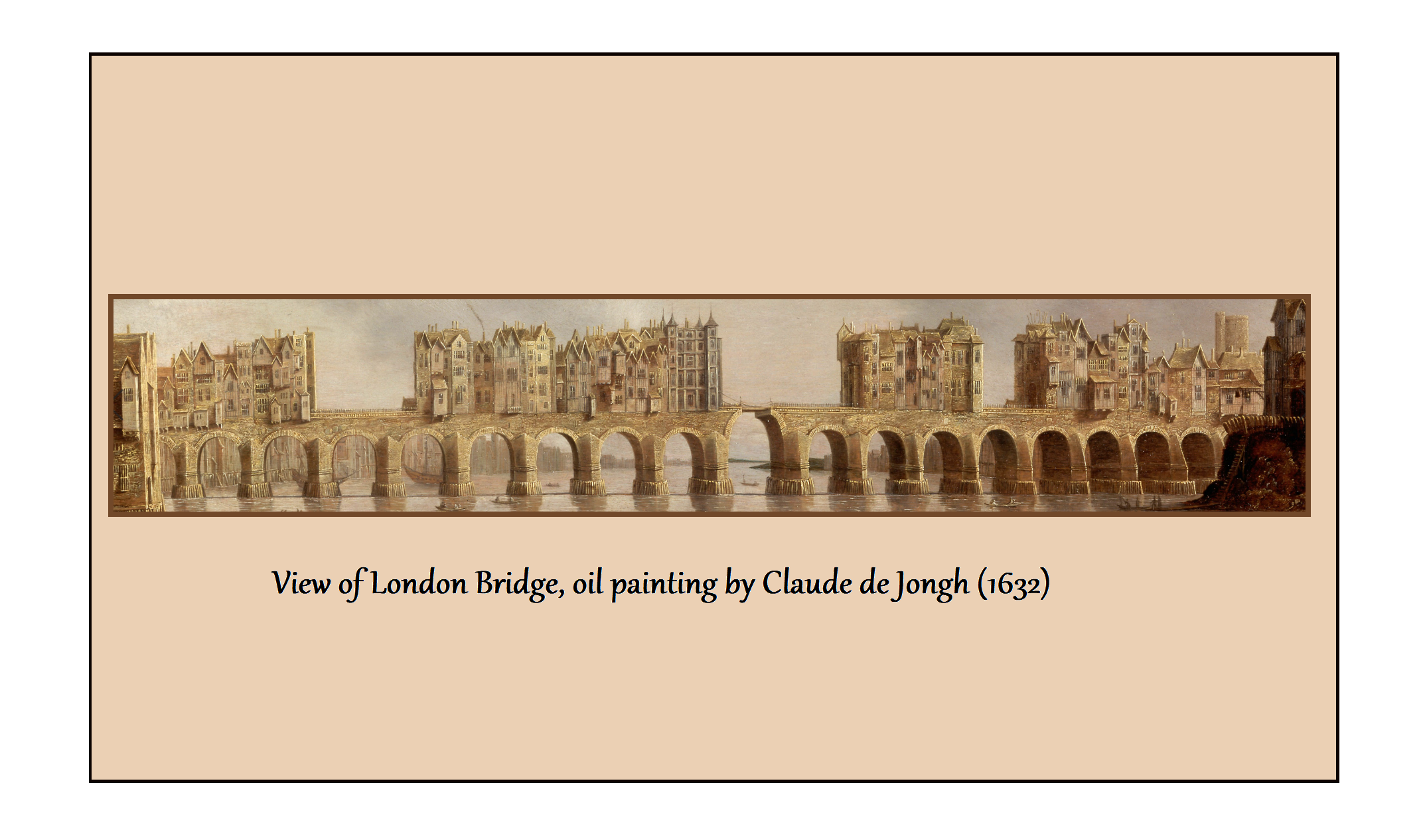
The idea of a bridge across the Thames with houses, businesses and even a chapel crowded onto its arches – apparently in a state of dereliction so awful it can be sung about in schools – has captured the imagination of generations of Londoners. I will now answer the questions you may be asked if a discussion on Old London Bridge (1209-1831) breaks out in the pub, club, living room, restaurant, football terrace, nail bar or zoom meeting.
Much of the information comes from Dorian Gerhold’s recent scholarly publication for the London Topographical Society, London Bridge and Its Houses, c.1209-1761,
Henry II, as an act of contrition after his disagreements with Thomas Becket had ended in a regrettably violent manner in 1170. Hence the chapel in the centre of the bridge originally dedicated to the canonised Becket. Peter of Colechurch, chaplain, is suspected of being the main fundraiser. He was buried in the chapel.
It replaced the last of a series of wooden bridges.
You betcha. Until 1750 it was the only bridge over the Thames in London, and was thus also the entrance to the City from the south and channel ports – it was so busy all closures had to take place at night, and at particularly bad moments it might take an hour to cross. A French visitor in 1578, the wonderfully named Louis Grenade, described it as ‘the most magnificent [bridge] that exists in the whole of Europe’.
Of course – until Charles II put a stop to it in 1660. Above the stone gate at the Southwark end, you would have seen, at different times, the boiled and tar-covered noggins of William Wallace and Thomas Cromwell.
No. There are a number of bridges recorded as having houses on them in Western Europe for a start, but London Bridge was the longest, and at times housed more than 500 people. It seems to have been designed from the outset with houses in mind.
With knobs on. Almost every building had shops on the ‘ground’ floor. In 1743, it was recorded that there were 64 tradespeople resident on the bridge, including booksellers, barber-surgeons, victuallers, needlemakers, cutlers, haberdashers and hosiers.
Yes, at various times there was a ‘common siege’, as they were known, at both the northern and southern end. However, in 1481 the northern siege fell into the Thames, drowning 5 men – so there appears to have been a certain risk associated with using them.
There is, although as with many old nursery rhymes the meaning of London Bridge is Falling Down is disputed by the sort of academics who analyse nursery rhymes to the nth degree and therefore should not be invited to dinner parties. Old London Bridge needed frequent and expensive renovations even after the houses were finally removed in 1762 – but it can be argued that this was primarily due to problems with its original design and subsequent alterations rather than neglect. This contrasts with Old St Paul’s Cathedral, for example, which was in a state of near-dereliction long before 1666. But I digress …
Partly. The houses on the northern section (called the ‘principal part’) were destroyed but there was a large gap between these and older buildings in the middle of the bridge which acted as a fire-break, preventing further destruction. Ironically, the destroyed principal part was relatively new, having been partially rebuilt after an earlier fire of 1633. Charles I had initially refused permission to rebuild after 1633, but with an eye to the main chance the City authorities went ahead after the King was defeated at the battle of Marston Moor.
There were regular fires and also damage during rebellions – in 1212, 1450, 1471, 1504 and 1725 as well as 1633 and 1666. But Old London Bridge survived until it was demolished in 1831, making way for New London Bridge with its wider roadway and wider arches.
Yes, we do. The bridge was narrow and road traffic control desperately needed. The ‘keep left’ rule was imposed on the bridge in 1722 and subsequently applied to all roads in 1835, but there was an earlier ‘keep right’ rule on the bridge from 1675. This didn’t catch on because coachmen typically held their whips in the right hand, so sat on the right and needed to drive on the left to enable them to use the whip properly.
London Bridge, in its various incarnations, has been within the boundaries of the City of London since c.1282. It is in the ward previously called Bridge Within but now Bridge since it merged with Bridge Without. A wise renaming – Bridge Within and Without sounds like a lyric from a hippy folk song.
When the bridge came under the control of the City, the authorities established the Bridge House Estates, a charitable trust, to own and maintain it. Remarkably, that is still the case today, almost 740 years later. In the intervening years, the trust has experienced times of poverty but now has such a tasty asset portfolio that despite owning and maintaining the five ‘City bridges’ (London, Tower, Blackfriars, Southwark, Millennium) it has been released from its commitment to only spend money on the bridges, and contributes to other charitable causes. The trust met the entire cost of building the latest London Bridge, which opened in 1967.
The trust owns much of the land immediately south of London Bridge called the Guildable Manor – a legal entity so bizarre and archaic that it must rank as the coelacanth of the local government world. Here’s a small part of what goes on, adapted from the Manor’s own website: Since 1327 the City has paid a fee farm of £11 per annum. It is paid by the Foreman and officers of the Manor, when the Jurors are summoned to an Exchequer Court by the Queen’s Remembrancer, as a Quit Rent on behalf of the City. And that’s one of the more comprehensible parts. The website is a recommended – if bewildering – read, which never seems to get around to answering the key question “Why?” But I’m digressing once more.
There was one drawbridge to allow taller vessels through; smaller boats could pass under the arches although this was hazardous: the huge piers of the bridge so severely limited the width of the river flow that it acted like a weir. The difference in water levels either side of the bridge could be as much as 5 feet, so any boat attempting to pass under the bridge was effectively shooting rapids. Gerhold quotes a 1700 source describing ‘the frightful roaring of the bridge waterfalls’. No wonder it was in need of constant repair. Despite this it suffered partial collapse only twice in 600 years. When the houses were cleared in 1762 a wider arch was built in the centre.
I doubt it. The constant sound of the Thames crashing through the restricted channels, and the hoards of people – and animals – using it throughout the day means it would not have been a peaceful or fragrant place. Several buildings extended right across the roadway at first or second floor level, including the extraordinary Nonsuch House, leaving the buildings and road beneath in shadow even on sunny days.
The quality of the houses also varied considerably along the bridge and over time – there were a number of redevelopments over 500+ years. The chapel was converted and was the largest single house on the bridge from 1556 until it was subdivided. Nonsuch House was the largest building, consisting of a lavish pair of dwellings, and is also widely described as being the first recorded example of a prefabricated building; sadly Gerhold disproves this idea. The ‘principal part’ of the bridge at the north end was considered the most upmarket section.
No. That was New London Bridge, built in 1831 to replace Old London Bridge, and sold to Robert McCulloch in the 1960s. London now has Even-Newer London Bridge.
Yes, a few remains still exist. Aside from the many records from the Bridge House Estates being used to shed new light on the bridge, there are some physical remains:
St Magnus the Martyr is the church that stood at the north end of the bridge. When the buildings on the bridge were cleared and the bridge widened in 1762, the tower of St Magnus stood in the direct line of the new pedestrian path. The solution was the demolition of the vestry and the opening up of the ground floor of the tower as part of the path. This arrangement, surely unique in London and now leading nowhere except the churchyard – New London Bridge was built slightly upstream – is a real link with the past.
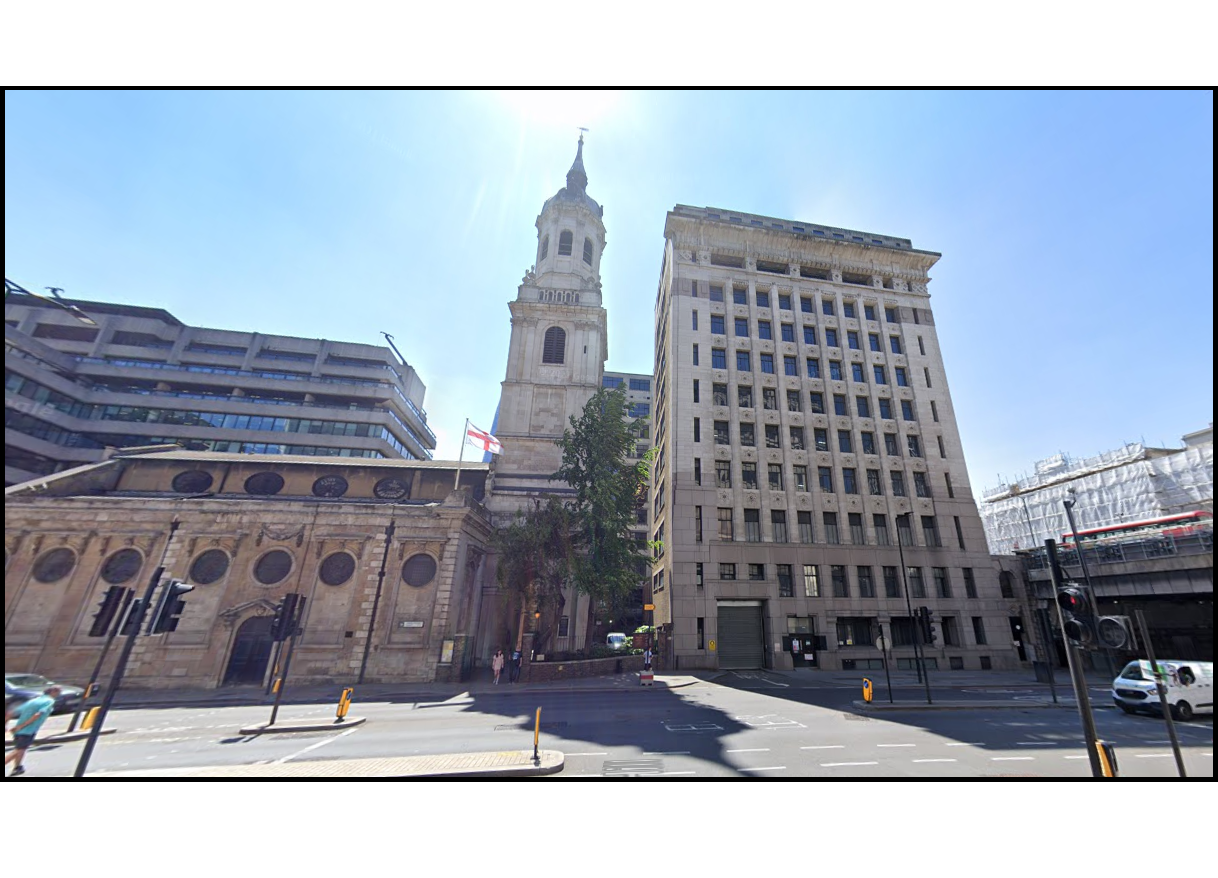
→ St Magnus the Martyr, with the pedestrian walkway previously leading to the widened Old London Bridge through the tower. The predecessor to Adelaide House, to the right, was built on the northern approach once the bridge had been demolished in 1831. The Thames lies just behind these buildings
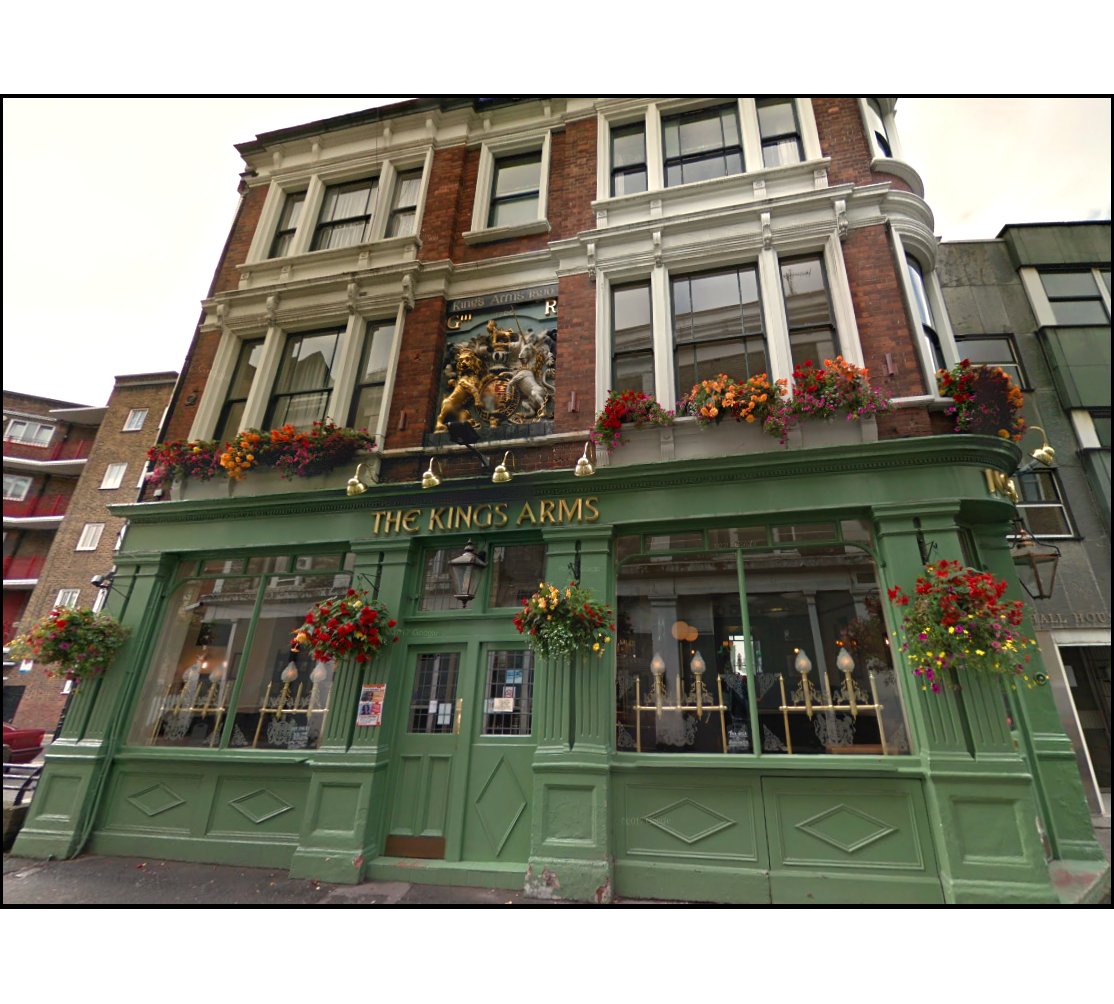
← The King’s Arms, with Hanoverian Coat of Arms centre, 65 Newcomen Street SE1
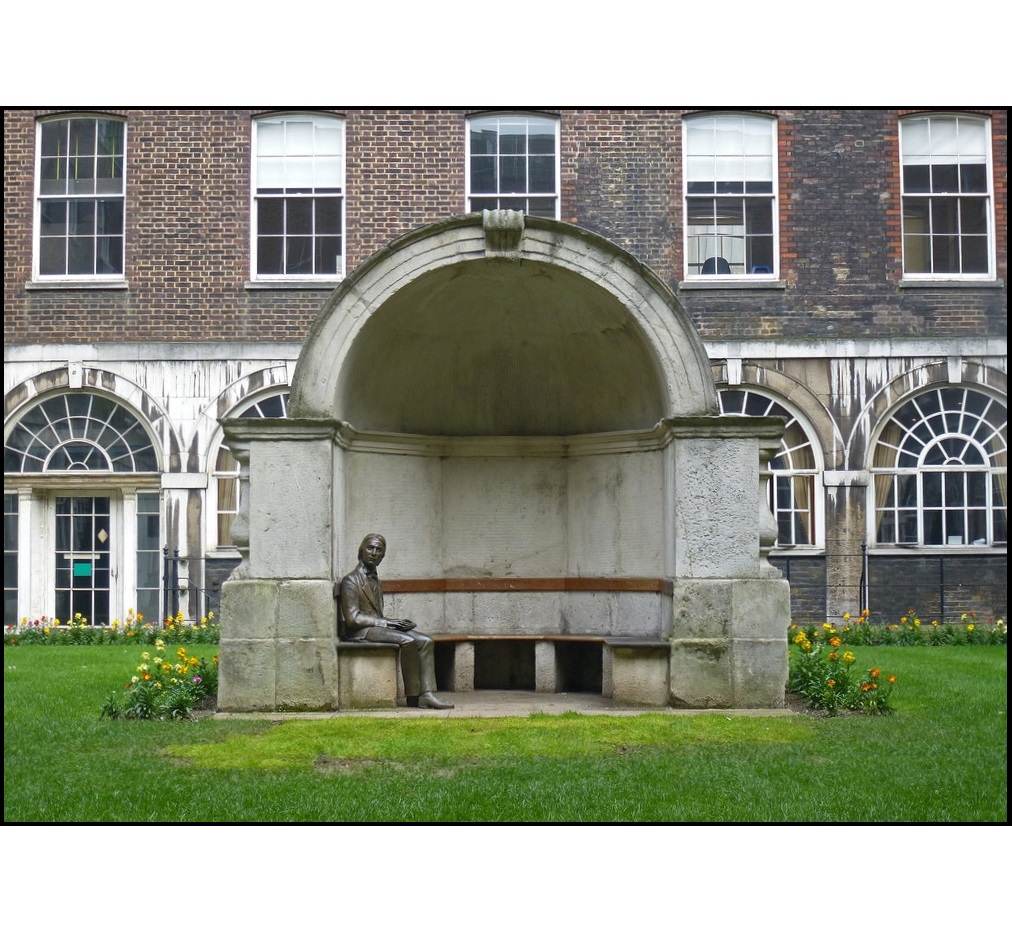
→ At Guy’s Hospital, John Keats sits in one of the pedestrian alcoves added to the bridge during the 1762 refurbishment, which removed all the houses.
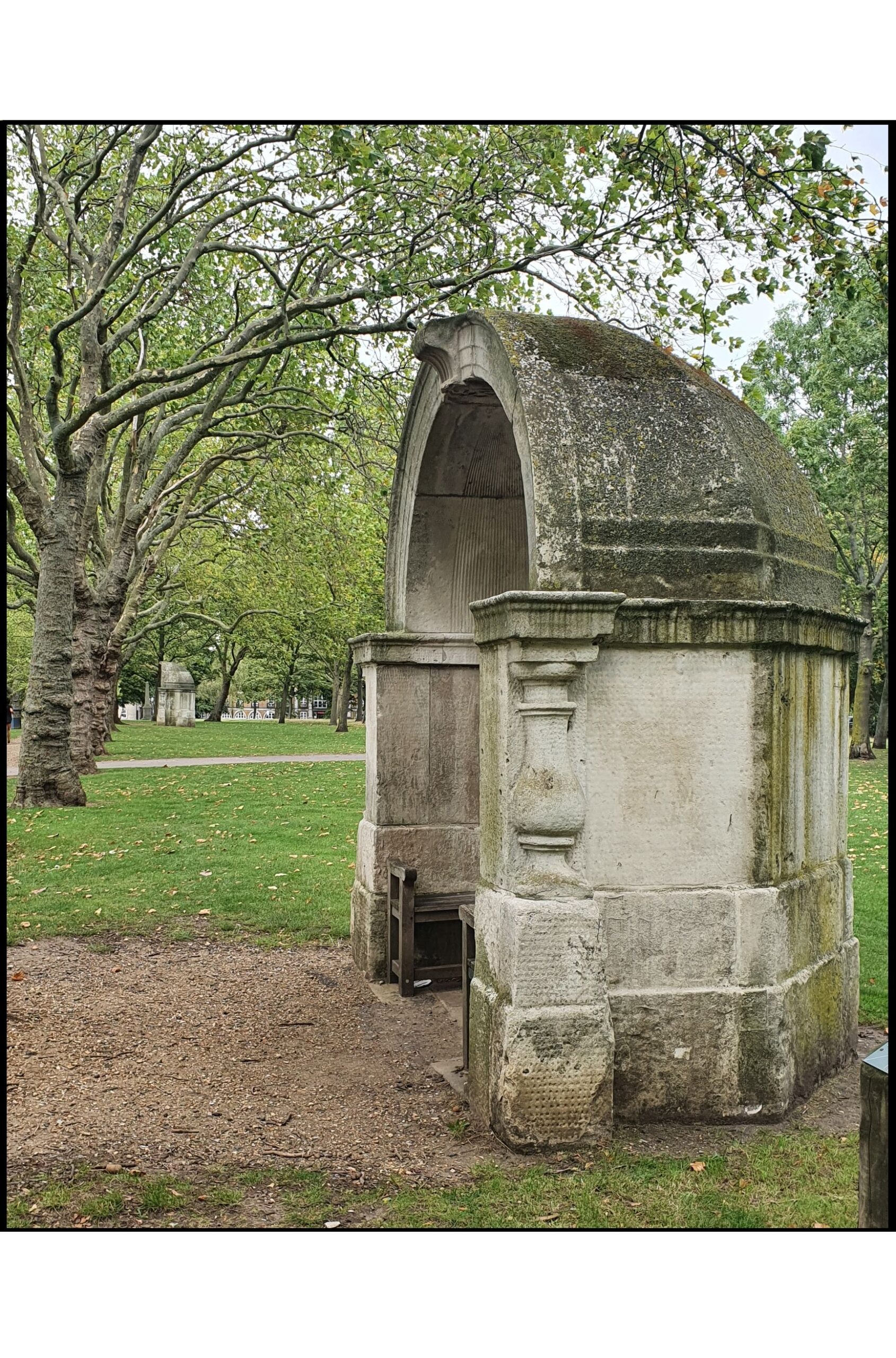
→ Another alcove, this time in Victoria Park, East London, with its twin in the background.
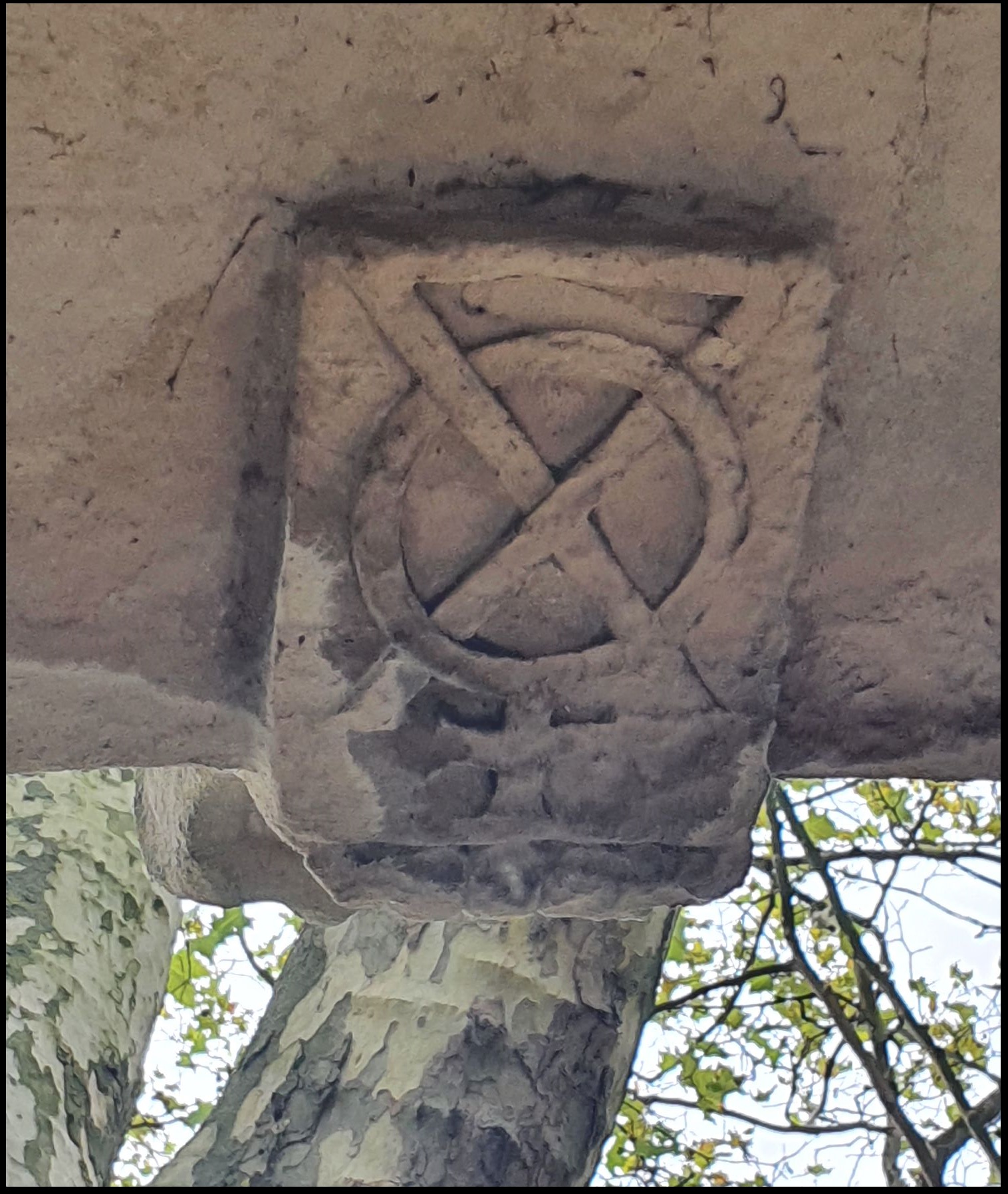
This heavily eroded stone carving is the Bridge House Estates symbol, on the ceilings of the alcoves.
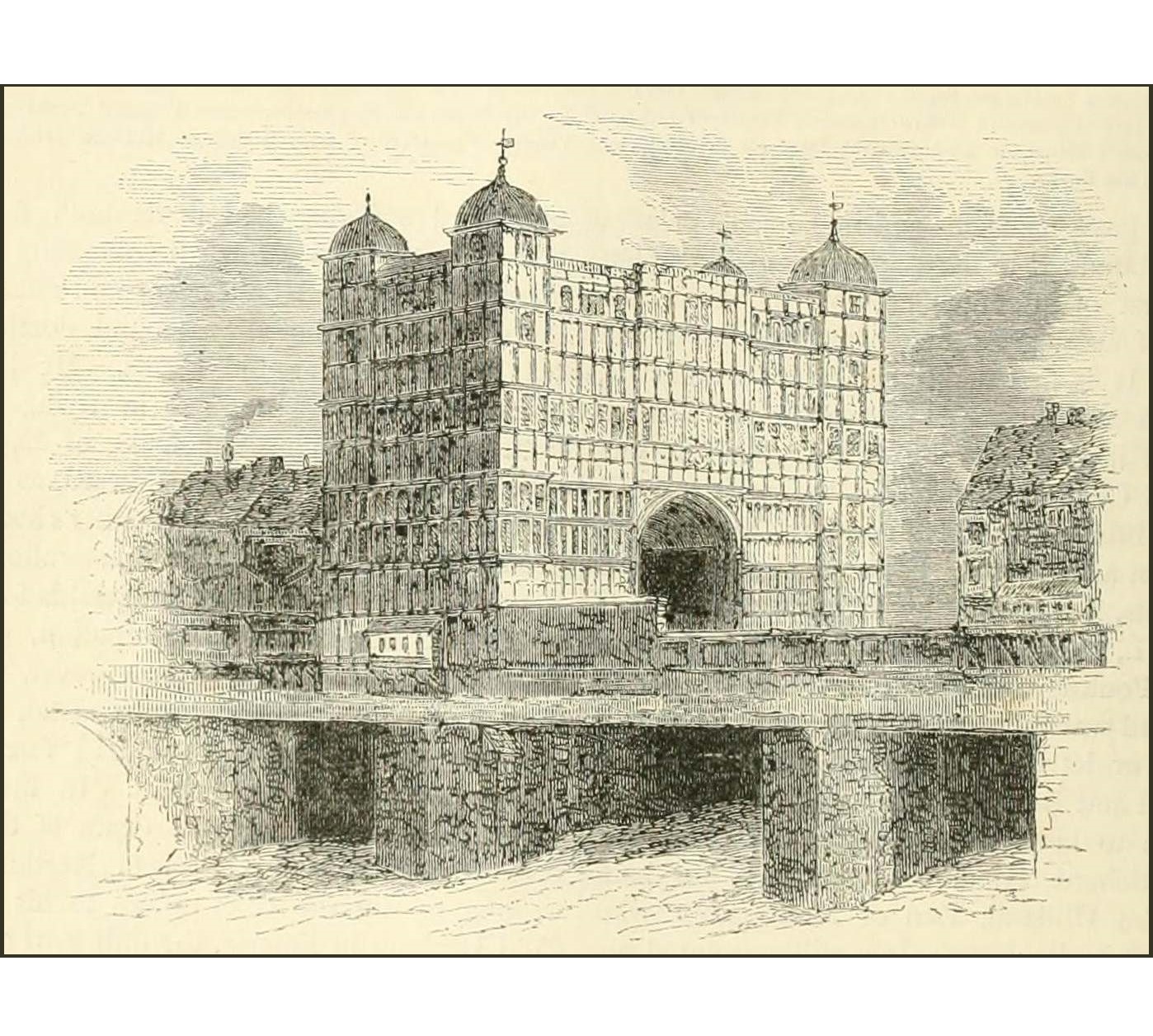
→ Nonsuch House, the most impressive building on the bridge, demolished 1757.
Nearest Stations:
Selected Bibliography:
Credits: